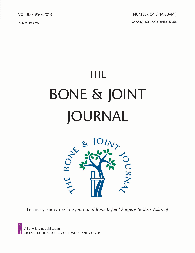
Arthroplasty
Similar migration and lower radiolucency with cementless vs cemented UKA
Bone Joint J. 2015 Feb;97-B(2):185-91Forty-seven patients scheduled for unicompartmental knee arthroplasty (UKA) with an Oxford implant were randomized to either cemented or cementless fixation. The purpose of this study was to evaluate whether fixation types differed with respect to radiostereometric migration. Follow-up was performed at 3, 6, 12, and 24 months postoperatively. The only consistent difference that was noted between groups was y-axis translation, with significant greater subsidence found in cementless components, mostly occurring within the first 3 months after surgery. A higher incidence in radiolucency around the tibial component was found in the cemented group compared to the cementless group.
Unlock the full article
Get unlimited access to OrthoEvidence with a free trial
Start TrialCritical appraisals of the latest, high-impact randomized controlled trials and systematic reviews in orthopaedics
Access to OrthoEvidence podcast content, including collaborations with the Journal of Bone and Joint Surgery, interviews with internationally recognized surgeons, and roundtable discussions on orthopaedic news and topics
Subscription to The Pulse, a twice-weekly evidence-based newsletter designed to help you make better clinical decisions
Exclusive access to original content articles, including in-house systematic reviews, and articles on health research methods and hot orthopaedic topics
Or continue reading this full article
Register Now

Subscribe to "The Pulse"
Evidence-Based Orthopaedics direct to your inbox.




































